Abstract
A new valveless ventilator, which uses an air jet to provide the driving force for positive pressure ventilation, was used on 13 newborn babies (10 of very low birthweight) who had severe respiratory disease. The ventilator differs from 'true' jet ventilators in that its driving gas does not take part in gas exchange. Functionally it is a pressure pre-set, time-cycled ventilator, whose performance is characterised by the rapid and precise maintenance of both inspiratory and expiratory airway opening pressure. All the babies had progressively worsening respiratory failure (mean values of arterial pCO2 were 9.46 kPa, with a pH of 7.14, and an inspired oxygen concentration of 92.5%) on conventional mechanical ventilation. On the new ventilator, with the same settings, there was a dramatic and highly significant improvement within 20 to 30 minutes (mean values of arterial pCO2 were 6.45 kPa, pH 7.26, and inspired oxygen concentration 85.7%). This improvement was maintained. The new ventilator represents an important advance in the management of babies with severe respiratory failure.
Full text
PDF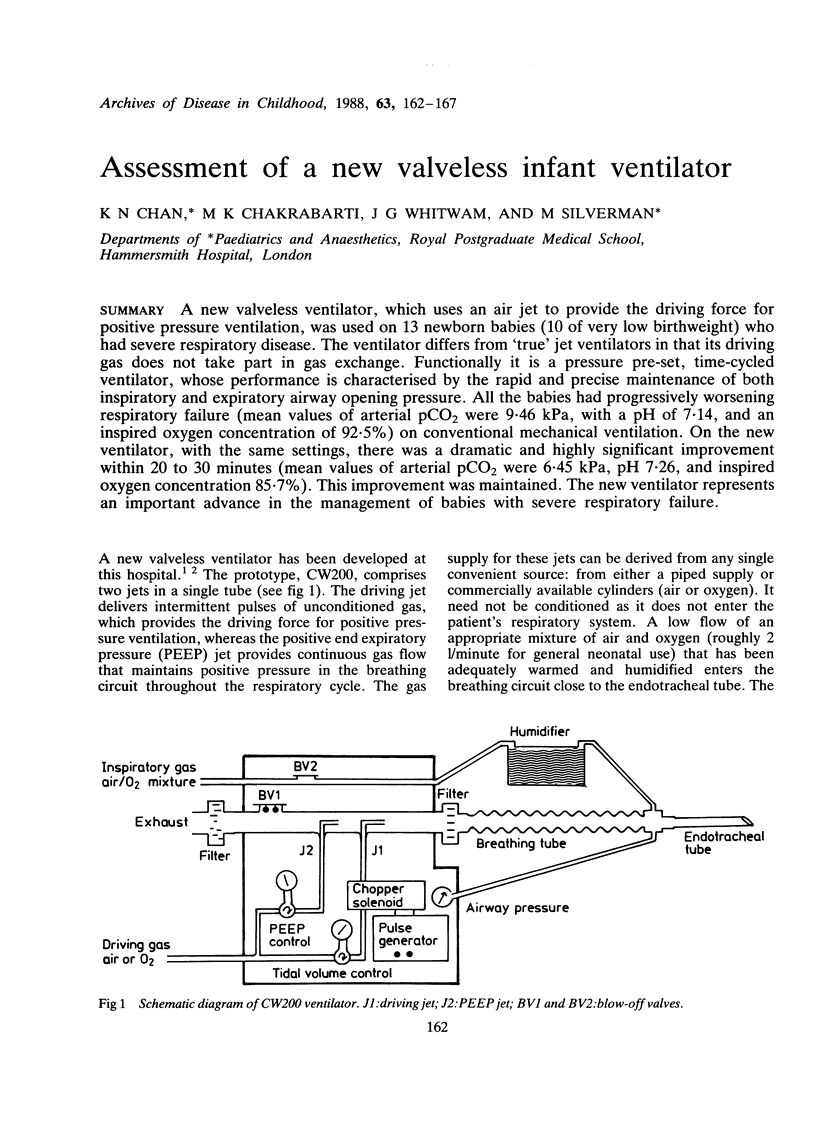
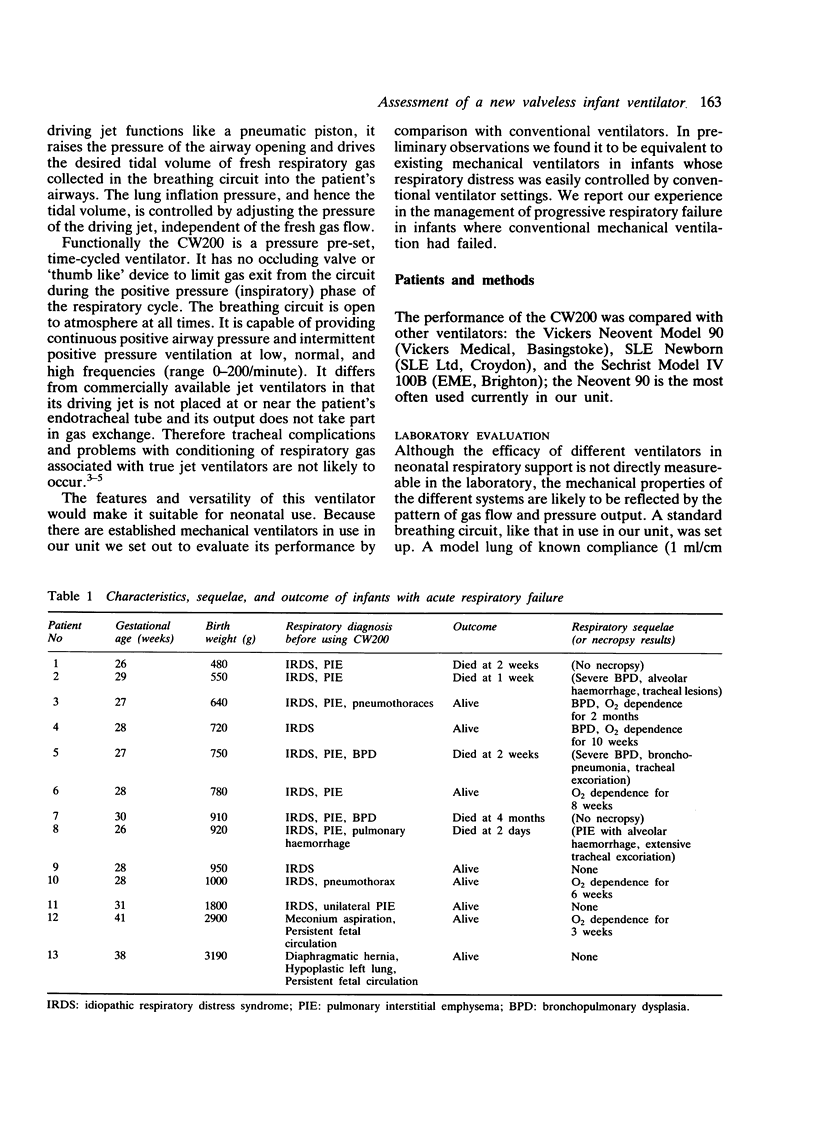
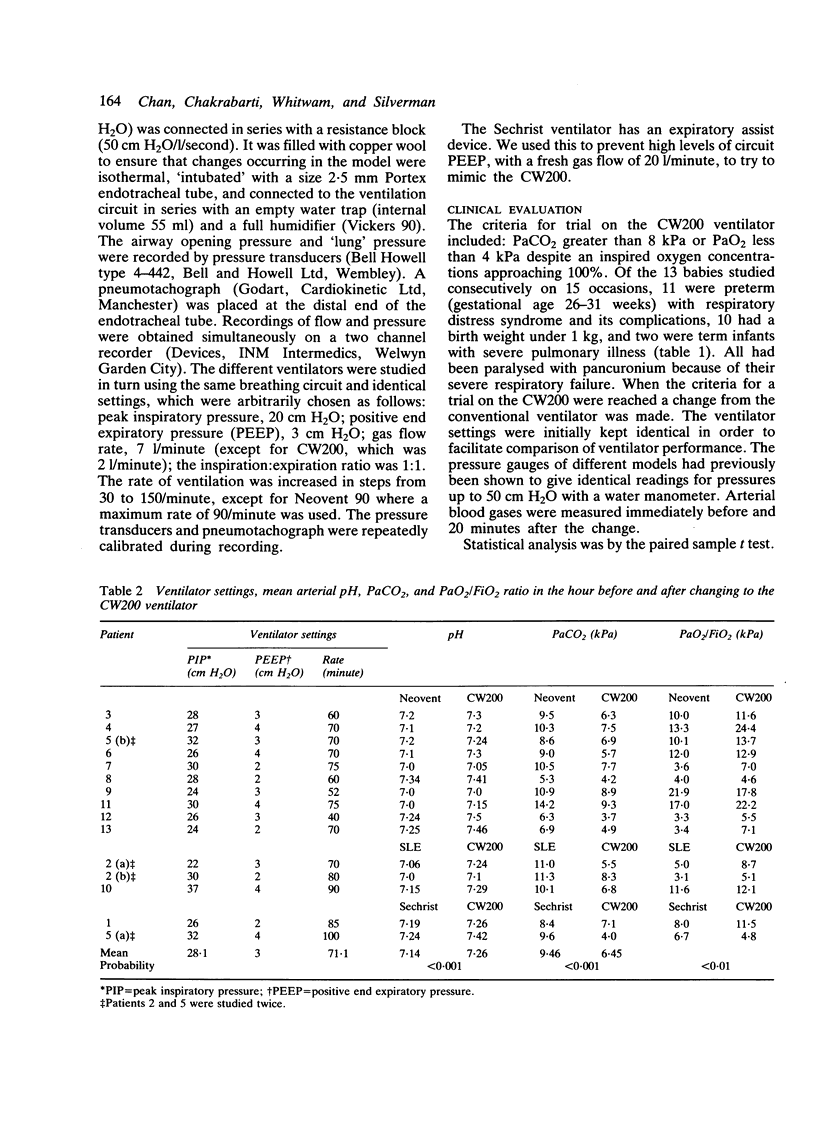
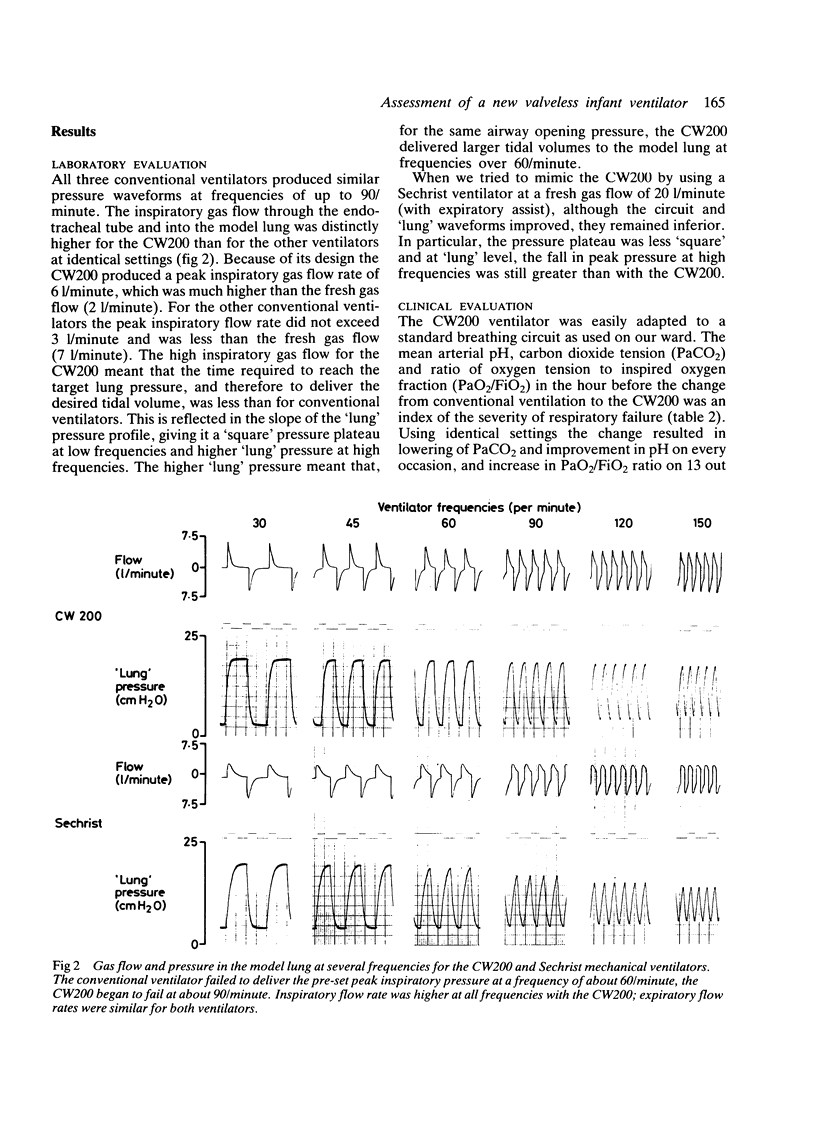
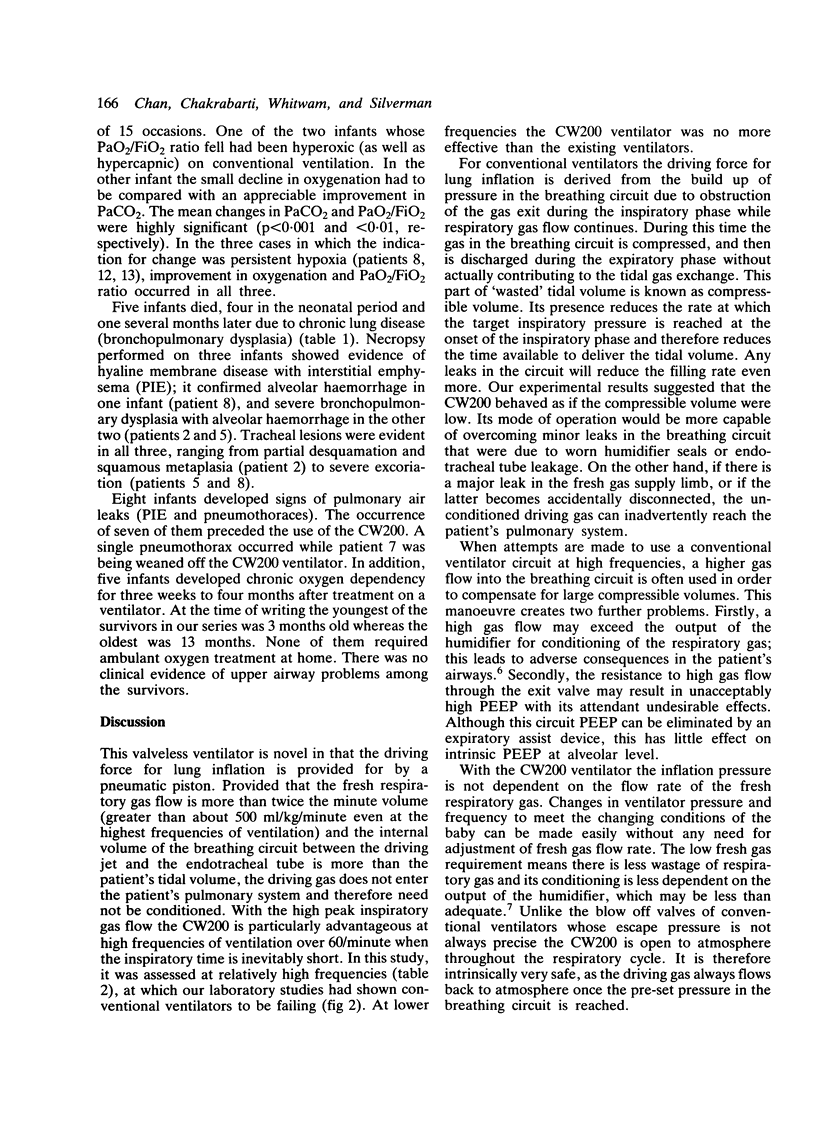

Selected References
These references are in PubMed. This may not be the complete list of references from this article.
- Boros S. J., Mammel M. C., Coleman J. M., Lewallen P. K., Gordon M. J., Bing D. R., Ophoven J. P. Neonatal high-frequency jet ventilation: four years' experience. Pediatrics. 1985 Apr;75(4):657–663. [PubMed] [Google Scholar]
- Chakrabarti M. K., Whitwam J. G. A new valveless all-purpose ventilator. Description and laboratory evaluation. Br J Anaesth. 1983 Oct;55(10):1005–1015. doi: 10.1093/bja/55.10.1005. [DOI] [PubMed] [Google Scholar]
- Chalon J., Loew D. A., Malebranche J. Effects of dry anesthetic gases on tracheobronchial ciliated epithelium. Anesthesiology. 1972 Sep;37(3):338–343. doi: 10.1097/00000542-197209000-00010. [DOI] [PubMed] [Google Scholar]
- Neu J., Hamilton L., Linehan J., Rich M., Murkowski K., Wilson A., Oechler H. Long-term high-frequency jet ventilation in neonates. Crit Care Med. 1984 Sep;12(9):833–835. doi: 10.1097/00003246-198409000-00036. [DOI] [PubMed] [Google Scholar]
- Pokora T., Bing D., Mammel M., Boros S. Neonatal high-frequency jet ventilation. Pediatrics. 1983 Jul;72(1):27–32. [PubMed] [Google Scholar]
- Tarnow-Mordi W. O., Fletcher M., Sutton P., Wilkinson A. R. Evidence of inadequate humidification of inspired gas during artificial ventilation of newborn babies in the British Isles. Lancet. 1986 Oct 18;2(8512):909–910. doi: 10.1016/s0140-6736(86)90424-1. [DOI] [PubMed] [Google Scholar]
- Thomson A., Silverman M. Single-breath measurement of lung mechanics in very low birth weight infants. Crit Care Med. 1985 Jan;13(1):4–8. doi: 10.1097/00003246-198501000-00002. [DOI] [PubMed] [Google Scholar]
- Whitwam J. G., Chakrabarti M. K., Konarzewski W. H., Askitopoulou H. A new valveless all-purpose ventilator. Clinical evaluation. Br J Anaesth. 1983 Oct;55(10):1017–1023. doi: 10.1093/bja/55.10.1017. [DOI] [PubMed] [Google Scholar]


